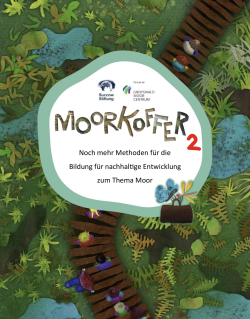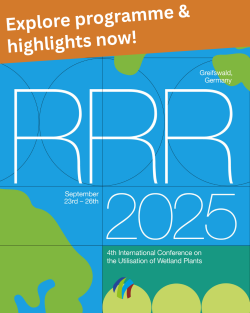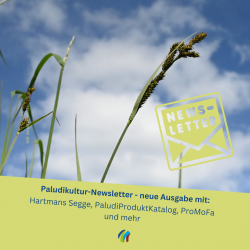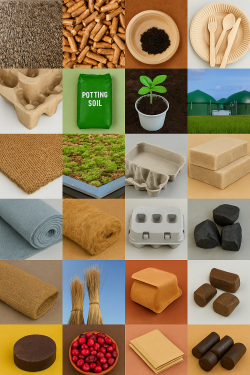News
2025
Capturing the value of wetlands – digitally
by Nina Körner (comments: 0)
The Paludiculture Interview

25/08/2025 What is the value of peatlands? How can the ecosystem values of rewetted areas in particular be captured and quantified? With the Moormonitor, product designer and peatland enthusiast Milan Bergheim and his colleagues in the Valpeats project are developing an economical and practical monitoring system for this purpose. The aim is to enable peatland areas to be rewetted more quickly and over a larger area and used for paludiculture. Read the full interview here.
Moorkoffer, the Second
by Helena Plochberger (comments: 0)
Even Moore Fun and a Song Collection

28/07/2025 The Moorkoffer 2 (in german) is not a finished suitcase – it is a collection of educational materials for peatland and climate education, designed for teachers, environmental educators, volunteers, and anyone actively engaged in education for sustainable development.
The publication contains 50 methods: from soil drilling and role-playing games to experiments, meditations, and creative reflection formats. These methods are flexible, location-based, and adaptable to different needs – they can be used even without access to a real peatland. All materials are freely available and can be used and shared under the CC BY-NC license, meaning non-commercial use with attribution.
Additionally, there's the musical audio play "Im Libellenwunderland" (in german) for children in daycare centers and primary schools, which playfully explores topics such as biodiversity, water scarcity, and climate change. It is available on Spotify, YouTube, and SoundCloud. The booklet “IM.MOOR.SEIN.”, designed to promote mindful sensory experiences in peatlands, guides individuals and groups of all ages through all four seasons. All materials were developed as part of the MoKKa project by the Succow Foundation and the University of Greifswald.
RRR2025 - Programme & Highlights
by Nina Körner (comments: 0)
Check it out now!

24/07/2025 From hands-on workshops to eye-opening excursions, the 4th International Conference on Renewable Resources from Wet and Rewetted Peatlands (RRR2025) promises a rich and diverse experience. Researchers, practitioners, and policymakers from around the world will come together to discover paludiculture from all perspectives: in 2 key notes, 82 oral and 66 poster presentations.
Programme highlights include:
- Workshops – In-depth sessions for collaboration, training, and knowledge exchange
- Excursions – Visits to innovative peatland sites with Eddy towers, solar panels, and more
- Paludiculture Exhibition – Latest products made from wetland biomass
- Paludishow and conference dinner – A joyful and interactive evening of learning and entertainment great for networking
- Creative side events – Including a zombie fire documentary and immersive peatland soundscapes
Register by 15 August 2025 to secure your place in this unique international gathering.
Details and registration: rrr2025.com
Questions? Contact us at: info@rrr2025.com
Please feel free to share this information with colleagues or partners who might be interested.
PaludiProductCatalogue, ProMoFa and more
by Ann-Kathrin Krämer (comments: 0)
New issue of the Paludiculture Newsletter

20/07/2025 The new issue of the Paludiculture Newsletter is here – packed with highlights and background information on peatland conservation and paludiculture!
Some topics in the current issue:
- Programme highlights of RRR2025 – more information about the international conference
- The big collecting: the Paludi Product Catalog aims to showcase current products in one place
- Peatlands & Defense – an unusual perspective
- Regional insights: Peatland conservation how-tos – handouts for Lower Saxony and Schleswig-Holstein
- ProMoFa project in Bavaria – results and practical insights
- Valpeats & Peatland monitor – an interview on the digital assessment of peatland areas
Also: new publications, and an overview of current events on peatlands, climate protection, and paludiculture in the calendar. We hope you enjoy reading and welcome feedback on the newsletter by email to communication@greifswaldmoor.de.
PaludiProductCatalogue
by Helena Plochberger (comments: 0)
Be part of it!

11/07/2025 The catalogue aims to provide an overview of products, prototypes, and services related to the use of wet or rewetted peatlands. The focus is on highlighting the diversity and innovative strength of the companies involved. The Paludi Product Catalogue is a joint initiative by the partners of the PaludiNetz network but is also open to contributions from outside the network.
To reach the widest possible international audience, the catalogue will be published in both German and English. It will be distributed free of charge in printed form and may also be made available online (depending on the platform). Participation is voluntary and free of charge. The participating companies are responsible for the content they submit. The first edition of the catalogue at the RRR Conference in Greifswald this September.
A prerequisite for inclusion is that submissions are clearly related to the utilisation of wet or rewetted peatlands. The catalogue does not cover management practices or biomass processing technologies. For this area, the project PaludiZentrale is planning a separate platform coming up soon: PaludiScout.de.
If you would like to place a product in the catalogue, you can contact the catalogue team by email at produktkatalog@greifswaldmoor.de .The team can also help with translations.











